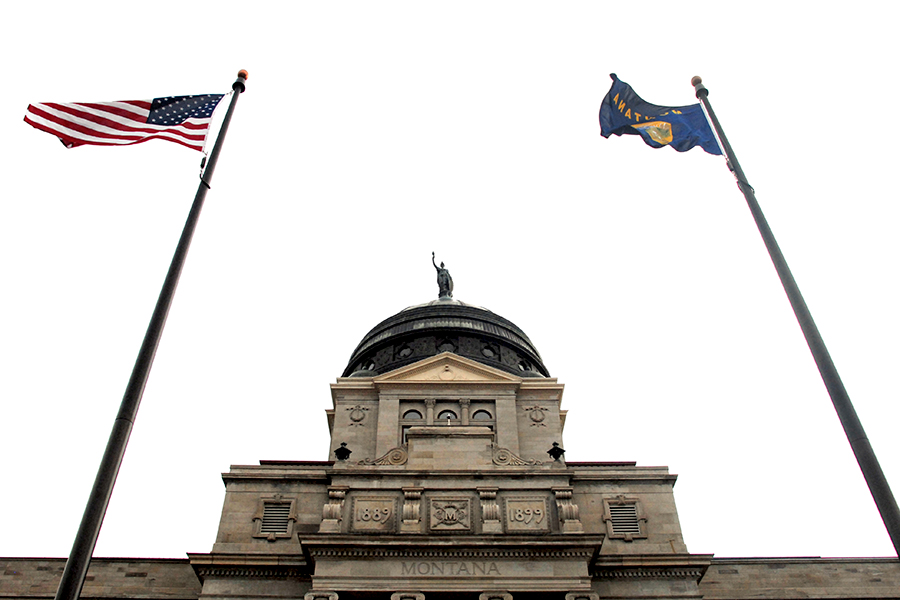A new state health department rule will add red-tape for Montanans seeking to use their Medicaid benefits to cover abortions, a long-debated policy the state’s Republican administration has said is a proper and legal restriction on state funds.
The proposed rule to tighten reporting standards and require pre-authorization for coverage was first introduced near the end of December. Abortion rights advocates, medical providers and Medicaid recipients have protested the change, arguing that the state’s current policy for covering medically necessary abortions helps maintain health care access for low-income Montanans.
While the Hyde Amendment prohibits use of federal funds for abortion except in the case of rape, incest or to save the life of the mother, states may set their own policies on how to use state dollars for abortion. Montana and several other states have for years used their Medicaid programs to cover abortion in more ways than what’s allowed by the federal standards.
The Department of Health and Human Services notified lawmakers on an interim health committee Tuesday that it planned to move forward with changing its current policy. The agency’s formal response to public comment against the rule said it does not violate the ruling in Armstrong v. State, the precedent that has kept pre-viability abortion legal and largely unrestricted in Montana for nearly 25 years. The announcement also said the rule doesn’t conflict with a district court ruling from 1995 that requires Montana Medicaid to pay for medically necessary abortions.
“The requirements established in this rulemaking are imposed to ensure that the Montana Medicaid program only pays for services from which there is statutory authority to cover — and that it does not pay for elective, non-therapeutic abortions,” the state said in announcing the rule adoption.
The rule limits the abortions that are eligible for coverage to those performed by physicians, despite the fact that Montana also allows qualified nurse practitioners to provide those services. It requires that, in order to get pre-authorization for coverage, providers submit information and documentation to prove that an abortion is necessary to save the pregnant patient from dying or because the person suffers from a physical or psychological condition that would be “significantly aggravated” by the pregnancy. The rule is set to go into effect on May 1.
The Montana Sexual and Reproductive Health Collective, a group of abortion clinic providers and community organizers, criticized the department’s decision in a Wednesday statement.
“Patients and their medical providers should not have to jump through unnecessary, burdensome hoops in order to prove to bureaucrats why they need access to safe abortion care,” said Hillary-Anne Crosby, a community engagement advocate with the group. “We are disappointed that the DPHHS has chosen to pursue this path despite the immense opposition from those enrolled in Medicaid, health care providers, and others, and we will continue to fight for all Montanans’ constitutional right to abortion.”
Planned Parenthood of Montana CEO Martha Fuller echoed those concerns in response to the health agency’s policy change, saying the policy will increase hurdles for patients.
“Access to Medicaid coverage for abortion, with minimal barriers, is critical for Montanans with low incomes. The amendment to the Medicaid rules would exacerbate economic distress and harm Montana families by forcing Medicaid recipients to delay care, or carry pregnancies to term against their will,” Fuller said.
Two other efforts to curb how Medicaid is used for abortions have been introduced in the Legislature and are continuing toward the governor’s desk.
House Bill 544, sponsored by Rep. Jane Gillette, R-Bozeman, is a near replica of the state health department’s rule. It passed out of the House and on Tuesday cleared a major hurdle in the Senate.
Another measure, House Bill 862, sponsored by Rep. Mike Hopkins, R-Missoula, would implement the standards of the federal Hyde Amendment in Montana law, restricting Medicaid coverage for abortions unless the pregnancy would “place the woman in danger of death” or was the result of rape or incest.
Gillette’s proposal passed second reading in the Senate, 32-18, with most Republicans voting in favor. Hopkins’ bill garnered one less Republican vote, passing the initial vote, 31-19. Neither bill has been transmitted to Gov. Greg Gianforte’s office.
Several other abortion restrictions have sailed through both Republican-majority chambers in recent weeks. Among them is House Bill 721, which would ban the most common and safest procedure for second trimester abortions and received mostly party-line support in the House and Senate. Another, House Bill 575, would prohibit abortions after 24 weeks. House Bill 937, a bill to require licensing for abortion clinics, passed another hurdle in the Senate Tuesday.
Gianforte’s office has received letters from abortion rights advocacy groups urging him to veto the bills. He has not signed any abortion-related legislation into law so far this session.
This story originally appeared in the Montana Free Press, which can be found online at montanafreepress.org.
